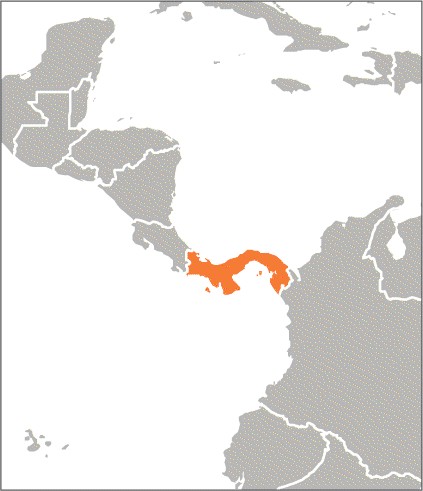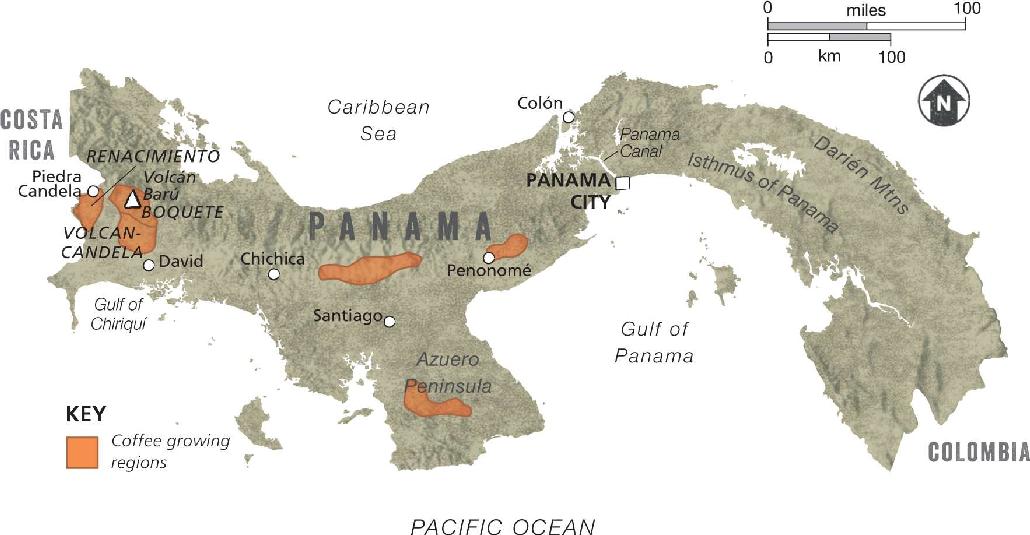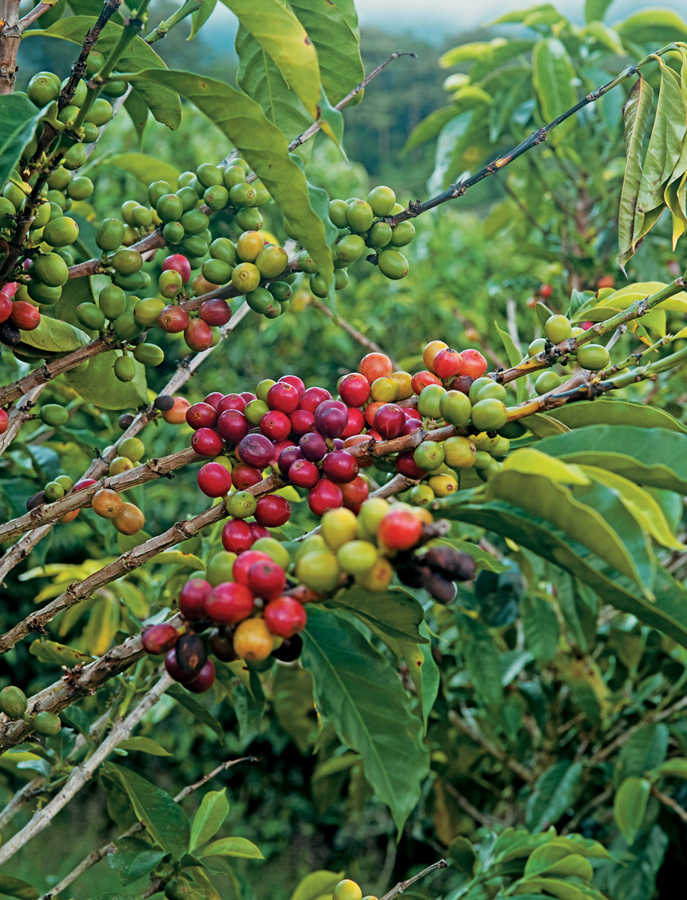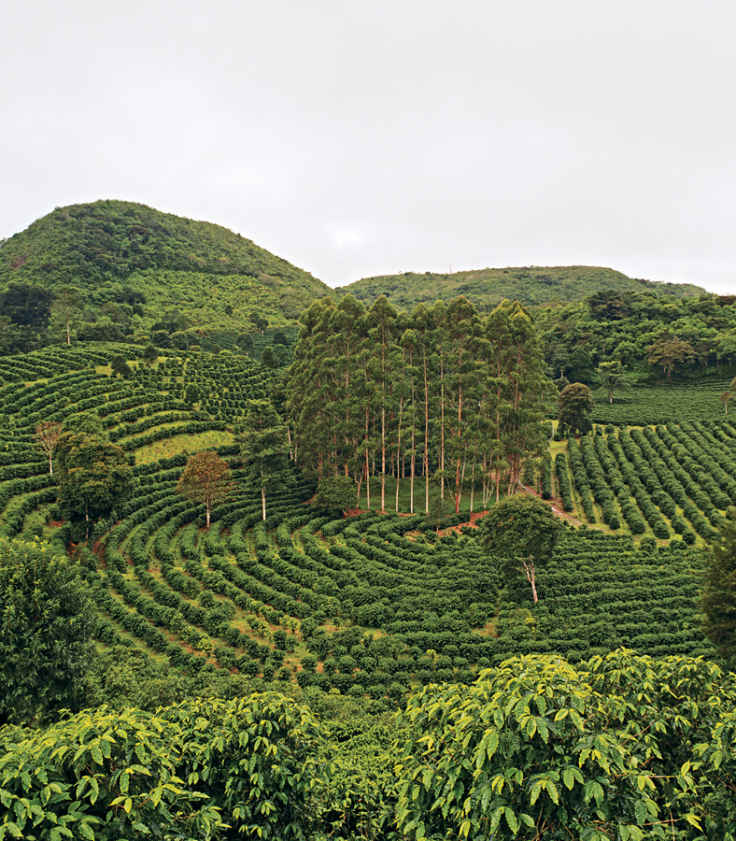Coffee plants probably arrived in Panama with the first European settlers in the early 19th century. In the past, Panama did not have a very good reputation for its coffees, and its production was about one-tenth of that of its neighbour Costa Rica, but now there is increasing interest from the speciality coffee community in the high-quality coffees it can produce.

Panama’s geography is such that there are a number of distinct microclimates in its coffee-growing regions, and there are some incredibly skilled and dedicated producers currently growing coffee. This means that there are some stellar coffees being produced, though these often come with relatively high asking prices.
These high prices are partly determined by the other major factor influencing the industry there: real estate. There is a high demand for land from North Americans wishing to buy a home in a stable, beautiful and relatively cheap country. Many farms that once produced coffee have now been sold as homes for ex-pats. Panama also has a higher standard of labour laws, so coffee pickers tend to be paid a higher wage here, a cost that is passed on to the consumer.

HACIENDA LA ESMERALDA
When it comes to discussing the price of coffee, one particular farm in Panama merits a mention and it is hard to think of another single estate that has had such a strong influence on the coffee industry in Central America. That farm is Hacienda La Esmeralda, owned and operated by the Peterson family.
At a time when the commodity price of coffee was relatively low, the Specialty Coffee Association of Panama organized a competition called the Best of Panama: the best lots of coffee from different farms in Panama were ranked and then put up for an online auction. Hacienda La Esmeralda had been growing a distinct variety called Geisha for some years, but this competition brought their coffee to a wider audience. They won the competition for four successive years from 2004 to 2007, and then again in 2009, 2010 and a category of the 2013 competition. From the outset this coffee broke records when it achieved a price of 170/lb in 2010. A small lot of its naturally processed coffee sold for $350.25/lb in 2013, leaving no one in doubt that this was the most expensive single-estate coffee in the world.
Unlike some other very high-priced coffees (such as the appalling novelty-driven Kopi Luwak, or some of the Jamaica Blue Mountain coffees), this farm achieved its prices due to the genuinely high quality of its coffee, although high demand and great marketing undoubtedly played a role. This record-breaking coffee tastes quite unusual: extremely floral and citrusy though quite light and tea-like in body. These characteristics are attributed to the Geisha variety.
The impact of this farm can be seen in the number of farms in Panama, and in Central America, who have started planting Geisha. For many producers this variety seemed like a promise of higher prices, and to some extent this has proven to be true, as Geisha lots are usually sold for higher prices than other varieties.
 The distinctive Geisha variety is commonly associated with crops from Panama. Its floral, citrusy flavour and efforts by local farmers to maintain high quality has created a growing demand.
The distinctive Geisha variety is commonly associated with crops from Panama. Its floral, citrusy flavour and efforts by local farmers to maintain high quality has created a growing demand.
TRACEABILITY
One should expect high levels of traceability from Panama. Coffees are often traceable down to a single estate and it is not unusual to see distinct lots from one particular estate, such as a coffee produced by a distinctive post-harvest process or one from a specific variety of the coffee plant.
 A plantation in Volcan is one of many in this region producing stunning coffees.
A plantation in Volcan is one of many in this region producing stunning coffees.
TASTE PROFILE
The better coffees tend to be citrusy and floral, light bodied, delicate and complex.
GROWING REGIONS
Population: 4,058,000
Number of 60kg (132lb) bags in 2013: 115,000
Panama’s regions have been defined more by how coffee has been sold than by geography. Previously, when coffee was more widespread, the regions listed below could have been grouped as one entity, as they are small and closely clustered together.
BOQUETE
This is the best-known of Panama’s producing regions. Its mountainous topography produces various distinct microclimates. The fairly cool weather and frequent mists help slow the maturation of the coffee cherries and some argue this mimics the effects of higher altitude.
| Altitude: | 400–1,900m (1,300–6,200ft) |
| Harvest: | December–March |
| Varieties: | Typica, Caturra, Catuai, Bourbon, Geisha, San Ramon |
VOLCAN-CANDELA
This region produces much of Panama’s food, and some stunning coffees. Named after the Volcan Baru volcano and Piedra Candela city, the region borders Costa Rica.
| Altitude: | 1,200–1,600m (3,900–5,200ft) |
| Harvest: | December–March |
| Varieties: | Typica, Caturra, Catuai, Bourbon, Geisha, San Ramon |
RENACIMIENTO
Another district within the Chiriquí province, on the border with Costa Rica. The district itself is relatively small, so it is not a primary producer of Panama’s speciality coffees.
| Altitude: | 1,100–1,500m (3,600–4,900ft) |
| Harvest: | December–March |
| Varieties: | Typica, Caturra, Catuai, Bourbon, Geisha, San Ramon |